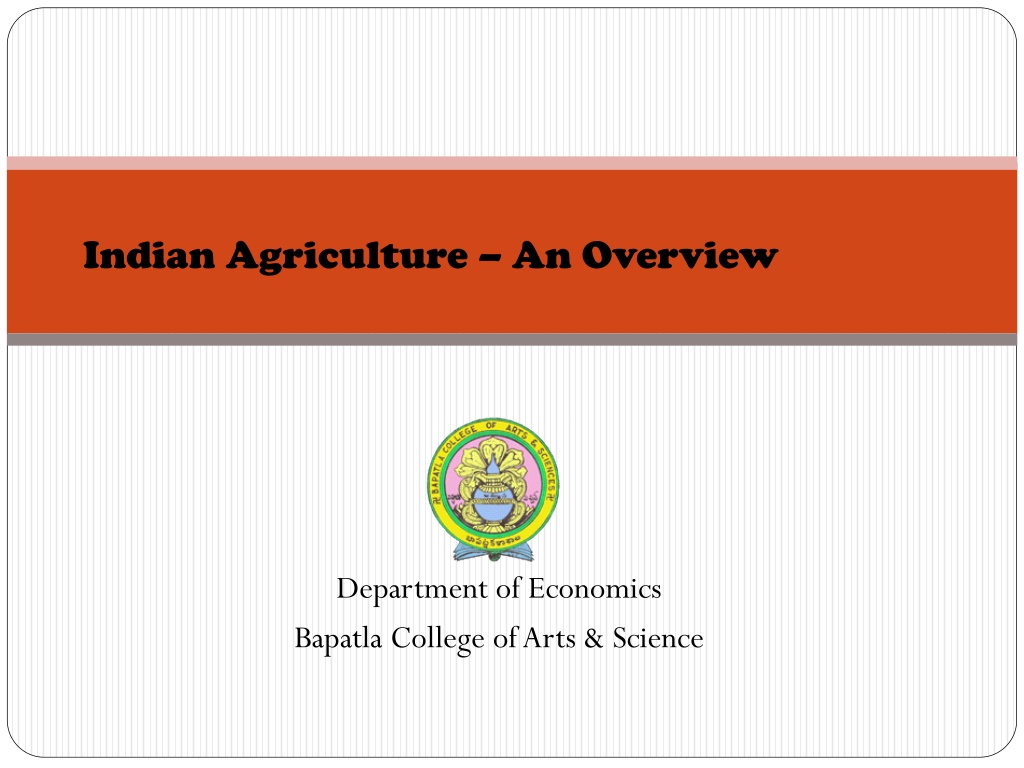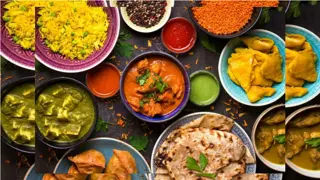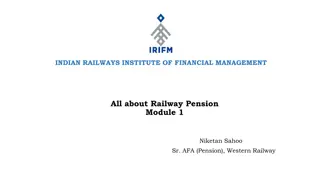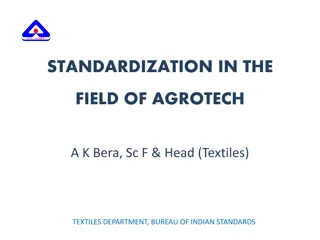Challenges and Opportunities in Indian Agriculture
Indian agriculture faces significant challenges, including the need to increase food grain production, decreasing landholdings, resource constraints, and environmental degradation. With a growing population and shifting dietary patterns, there is a higher demand for high-value food commodities. The sector must find ways to produce more with less land, water, and labor while addressing issues like soil erosion, soil salinity, and water-logging. Despite these challenges, there are opportunities for innovation and sustainable agricultural practices to ensure food security and economic growth in India.
Download Presentation

Please find below an Image/Link to download the presentation.
The content on the website is provided AS IS for your information and personal use only. It may not be sold, licensed, or shared on other websites without obtaining consent from the author. Download presentation by click this link. If you encounter any issues during the download, it is possible that the publisher has removed the file from their server.
E N D
Presentation Transcript
Indian Agriculture An Overview Department of Economics Bapatla College of Arts & Science
Some facts. Food grain production would need to increase by 5.5 MT annually Total calorie requirement will go up from 2495 to 3000 By 2050global population will rise to 9 billion .out of which 1.7 billion will be in India alone Currently.. 52% of our population is involved in Agriculture.... yet it contributes just 13.7% to India s GDP Demand for high-value food commodities will go up by > 100% due to migration of people into cities, increased wealth, shift towards diets rich in protein
Growing resource constraints Produce more with less Land | Water | Labor Much of India s total arable area already in use (46%) Most remaining land has serious soil and terrain constraints Arable Land (ha) per person 0.9 Most populous countries have least room to expand 0.8 Hectare of Arable Land 0.7 0.6 0.5 0.4 0.3 0.2 0.1 0 Brazil Russia India China Indonesia USA Mexico South Africa Zimbabwe Source: UN and FAO, 2005
There is also the problem of. Decreasing size of landholding They cultivate 44%of the land and contribute 50% to farm output 86%growers in India are smallholders Landholding declined from 2.30ha in the 70s to 1.32 ha in 2000-01 Average size would be a mere 0.68 ha in 2020 and 0.32 ha in 2030
And the degradation of the production environment . Soil erosion has degraded 120.72 million ha of land in India 8.4 million ha has soil salinity and water-logging Water-table & water quality deteriorating Green-revolution belt exhibiting problems owing to over-exploitation and mismanagement of soil-and-water resources
Produce more with less Land | Water | Labor Agriculture is India s largest user of water >40% lost to inefficient practices Nearly 50% agricultural land is rain- fed Source: UN-Water and FAO
Produce more with less Land | Water | Labor Farm demographics- aging population and migration to cities influence labor availability High-tech machines, complex production processes and strict production regulations require skilled labor Source: UN-Water and FAO
Indian Agriculture India agriculture has an extensive background which goes back to 10 thousand years. At present, in terms of agricultural production, the country holds the second position all over the world. Indian Agriculture has made rapid strides since independence; From food shortages and import to self-sufficiency and exports. From subsistence farming to intensive and technology led cultivation. Today , India is the front ranking producer of many crops in the world. Ushered in through the green, white, blue and yellow revolutions
Indian Agriculture Respective Global Rank Total Area Irrigated Area Population Economically Active population Total Cereals Wheat 2nd Rice 2nd Coarse grains Total Pulses Oil Seeds Fruits and Vegetables Implements (Tractors) Milk 1st Live Stock (castles, Buffaloes) 7th 1st 2nd 2nd 3rd 4th 1st 2nd 2nd 3rd 1st
Indian Agriculture- Some Facts Contributes to 14% of GDP Provides food to 1.25 Billion people Sustains 65% of the population : helps alleviate poverty Produces 51 major Crops Provides Raw Material to Industries Contributes to 1/6th of the export earnings Huge bio-diversity : 46,000 species of plants & 86,000 species of animals Largest producer in the world of pulses , tea , and milk India was largest exporter of rice and guar gum, and second largest exporter of cotton and beef (buffalo meat). Second Largest producer of fruits & vegetables,wheat,rice,groundnut & sugarcane. Our major imports: edible oils (US $11 billion) and pulses (about US $ 3 billion).
Agriculture productivity in India - 1970 to 2010 Average YIELD, 1970- 1971 Average YIELD, 1990- 1991 Average YIELD, 2010 2011 Crop kilogram per hectare kilogram per hectare kilogram per hectare Rice 1123 1740 2240 Wheat 1307 2281 2938 Pulses 524 578 689 Oilseeds 579 771 1325 Sugarcane 48322 65395 68596 Tea 1182 1652 1669 Cotton 106 225 510
File:Major crop areas India.pngIndian Agriculture Major Crop Areas Total Geographical Area - 328 million hectares Net Area sown - 142 million hectares Gross Cropped Area 190.8 million hectares Major Crop Production; Rice 106 million tonnes Wheat 96 million tonnes Coarse Cereals 41 million tonnes Pulses Oilseeds 20 million tonnes 20.9 million tonnes Sugarcane 29.9 million tonnes
Indian Agriculture Strong regional variations in yield Average farm yield in Bihar Average farm yield in Karnataka Average farm yield in Punjab Crop kilogram per hectare kilogram per hectare kilogram per hectare Wheat 2020 N.A 3880 Rice 1370 2380 3130 Pulses 610 470 820 Oil seeds 620 680 1200 Sugarcane 45510 79560 65300
Indian Agriculture Present Scenario (SWOT) WEAKNESS - Fragmentation of land - Low Technology Inputs - Unsustainable Water Management - Poor Infrastructure - Low value addition STRENGTHS - Rich Bio-diversity - Arable land - Climate - Strong and well dispersed research and extension system THREATS - Unsustainable Resource Use - Unsustainable Regional Development - Imports - small and shrinking holding size (1.16 ha in 2010-11); - climate variability...high risk. OPPORTUNITIES - Bridgeable yield crops - Exports - Agro-based Industry - Horticulture - Untapped potential in the North Eastern part of India But the future is safe and optimistic for the next decade and more
10 challenges faced by agriculture in India Small and fragmented land holdings Manures, Fertilizers and Biocides Shortage of good quality Seeds for poor peasants Problem of Irrigation Lack of mechanization Soil erosion Agricultural marketing Inadequate storage facilities Inadequate transport Scarcity of capital























